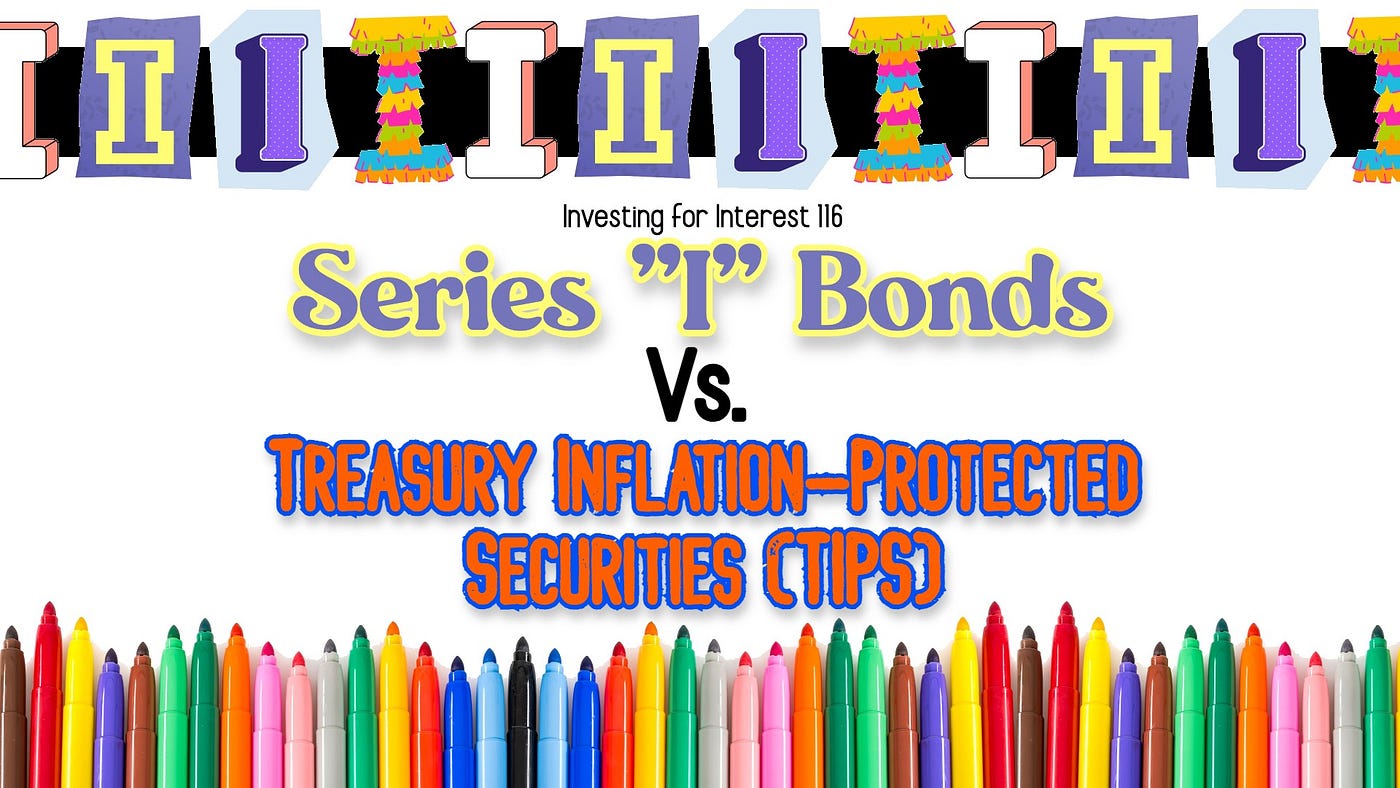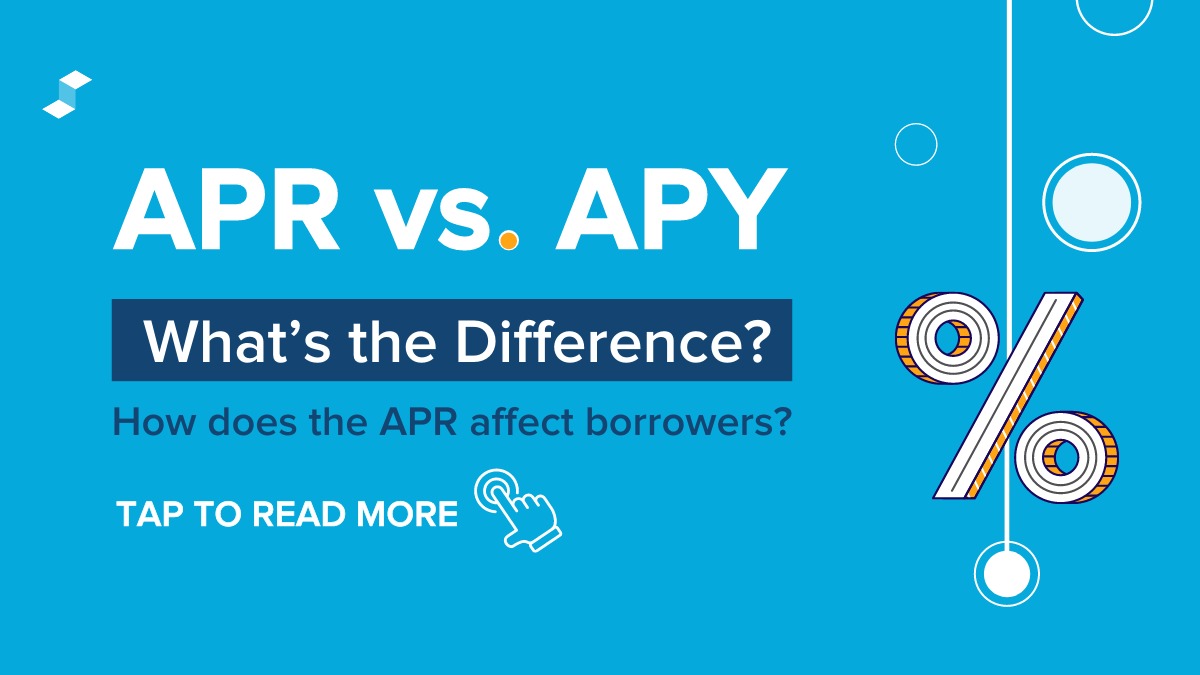Home>Finance>What Is The Difference Between Stocks, Bonds, And Mutual Funds


Finance
What Is The Difference Between Stocks, Bonds, And Mutual Funds
Published: January 19, 2024
Learn the key differences between stocks, bonds, and mutual funds in the world of finance. Gain a deeper understanding of investment options and make informed decisions.
(Many of the links in this article redirect to a specific reviewed product. Your purchase of these products through affiliate links helps to generate commission for LiveWell, at no extra cost. Learn more)
Table of Contents
Introduction
When it comes to investing, there are various options available in the market. Stocks, bonds, and mutual funds are three common investment vehicles that individuals consider when looking to grow their wealth. Understanding the differences between these options is crucial for making informed investment decisions.
In this article, we will provide an overview of stocks, bonds, and mutual funds, and delve into their characteristics, risks, and potential returns. By the end, you will have a clear understanding of each investment vehicle, allowing you to confidently navigate the world of finance.
Stocks, also known as shares or equities, represent ownership in a company. When you buy a stock, you become a partial owner of that company, which means you have a stake in its profits and losses. Investing in stocks offers potential long-term capital appreciation and the possibility to earn dividends, which are a portion of a company’s profits distributed to shareholders.
Bonds, on the other hand, are debt securities. When you buy a bond, you are essentially lending money to a company, municipality, or government entity. In return, the issuer promises to repay the principal amount plus interest over a specified period. Bonds are generally considered less risky than stocks and can provide a stable income stream through regular interest payments.
Mutual funds are investment vehicles that pool money from multiple investors to invest in a diversified portfolio of securities, such as stocks, bonds, or both. They are managed by professional fund managers who make investment decisions on behalf of the investors. Mutual funds offer the benefit of diversification, making them a popular choice for individuals seeking a balanced and professionally managed investment approach.
Now that we have a brief overview of stocks, bonds, and mutual funds, let’s dive deeper into their characteristics and explore the key differences between these investment options.
Overview of Stocks
Stocks, also known as equities, are one of the most common types of investments. When you buy a stock, you are purchasing a share of ownership in a company. Stocks can be bought and sold on stock exchanges, such as the New York Stock Exchange (NYSE) or the NASDAQ.
There are two main types of stocks: common stocks and preferred stocks. Common stocks give shareholders voting rights in the company and the potential for dividends. Preferred stocks, on the other hand, do not have voting rights, but they have a higher claim on the company’s assets and earnings. If a company were to go bankrupt, preferred shareholders would be paid before common shareholders.
Stocks offer the potential for capital appreciation, which means your investment may increase in value over time. However, stock prices can be volatile, and there is a risk of losing money if the stock price goes down. The value of a stock is influenced by various factors, including the company’s financial performance, industry trends, and investor sentiment.
Investing in individual stocks requires thorough research and analysis. It is important to understand the company’s fundamentals, such as its revenue, earnings, and competitive positioning. Additionally, keeping up with market trends and news can help you make informed decisions about which stocks to buy or sell.
Alternatively, investors can choose to invest in exchange-traded funds (ETFs) or mutual funds that focus on stocks. These funds offer diversification by holding a basket of different stocks. ETFs are traded on stock exchanges, while mutual funds are managed by professional fund managers who make investment decisions on behalf of the investors.
Overall, stocks can offer the potential for significant returns over the long term, but they also carry a higher level of risk compared to other investment options. It is important to have a well-diversified portfolio and a long-term investment mindset when investing in stocks.
Characteristics of Bonds
Bonds are debt securities that represent loans made by investors to issuers, such as corporations, municipalities, or governments. When you invest in a bond, you are essentially lending money to the issuer in exchange for regular interest payments and the repayment of the principal amount upon maturity.
One key characteristic of bonds is their fixed income nature. Unlike stocks, which provide variable returns based on company performance, bonds offer a predictable stream of income through periodic interest payments known as coupon payments. The interest rate is predetermined at the time the bond is issued, and it remains fixed over the life of the bond.
Bonds have a specified maturity date, which is the date when the issuer must repay the investors the principal amount borrowed. Maturities can range from a few months to several decades. Short-term bonds typically have lower interest rates but carry less risk, while long-term bonds generally offer higher interest rates but are more exposed to interest rate fluctuations and inflation risks.
Investors also need to consider the credit quality of a bond. Credit rating agencies such as Standard & Poor’s, Moody’s, and Fitch assign ratings to bonds based on the issuer’s creditworthiness. Higher-rated bonds, such as those with AAA or AA ratings, are considered less risky and typically offer lower yields. Lower-rated bonds, also known as junk bonds or high-yield bonds, carry higher credit risk but provide potentially higher returns.
While bonds are generally considered less volatile than stocks, their prices can still fluctuate depending on various factors, including changes in interest rates, inflation expectations, and the issuer’s financial health. When interest rates rise, bond prices tend to fall, and vice versa. This is because newly issued bonds with higher interest rates become more attractive to investors, reducing the demand for existing bonds with lower yields.
Investors can buy individual bonds directly from the issuer or through the secondary bond market, where previously issued bonds are traded. Alternatively, they can invest in bond funds, such as bond ETFs or mutual funds, which offer diversification across a range of bonds. Bond funds are managed by professional fund managers, who actively buy and sell bonds to optimize the fund’s performance.
In summary, bonds provide a fixed income stream, have a specified maturity date, and carry varying degrees of credit risk. They are less volatile than stocks and can offer stability and regular income for conservative investors or those seeking to diversify their investment portfolio.
Understanding Mutual Funds
Mutual funds are investment vehicles that pool money from multiple investors to invest in a diversified portfolio of securities, such as stocks, bonds, or both. They are managed by professional fund managers who make investment decisions on behalf of the investors.
One of the key advantages of mutual funds is their ability to offer instant diversification. By investing in a mutual fund, you gain exposure to a wide range of assets, which helps spread the risk across different investments. This diversification can help mitigate the impact of individual security volatility on the overall portfolio.
Mutual funds can be categorized into different types based on their investment strategies. For example, equity funds focus on investing in stocks, while bond funds primarily hold bonds. There are also balanced funds that invest in a combination of stocks and bonds to achieve a balance between risk and return. Additionally, there are sector-specific funds, international funds, and index funds that track a specific market index.
Investing in mutual funds offers several benefits. Firstly, mutual funds provide access to professional investment management. Fund managers have the expertise and resources to conduct detailed research and analysis to make informed investment decisions. This can be particularly beneficial for investors who may not have the time or knowledge to manage their investments actively.
Secondly, mutual funds offer a high level of liquidity. Unlike some other types of investments, such as real estate or private equity, investors can easily buy or sell mutual fund shares on any business day at the current net asset value (NAV) price. This provides investors with flexibility and convenience when it comes to accessing their investment capital.
Another advantage of mutual funds is their affordability. Most mutual funds have relatively low investment minimums, allowing individual investors to start investing with a small amount. This makes mutual funds accessible to a wide range of investors, including those with limited capital.
However, it’s important to note that mutual funds come with fees and expenses. These fees can include management fees, distribution fees, and operating expenses, which are typically expressed as a percentage of the fund’s assets under management. Before investing in a mutual fund, it’s essential to carefully review and consider the fee structure and expense ratio to ensure they align with your investment goals.
Overall, mutual funds provide an efficient and convenient way for investors to gain exposure to a diversified portfolio managed by professionals. They offer benefits such as diversification, professional management, liquidity, and affordability. However, investors should carefully evaluate the fund’s investment strategy, performance history, and fees before making an investment decision.
Differences between Stocks, Bonds, and Mutual Funds
While stocks, bonds, and mutual funds are all investment vehicles, they have distinct characteristics and differences that investors should be aware of. Understanding these differences can help individuals make informed decisions when constructing their investment portfolios.
Ownership vs. Debt: The fundamental difference between stocks and bonds lies in their underlying nature. Stocks represent ownership in a company, while bonds represent debt. When you purchase stocks, you become a partial owner of the company and have a claim on its assets and profits. With bonds, you are essentially lending money to an entity, which repays the principal amount along with interest.
Risk and Return: Stocks have the potential for higher returns over the long term, but they also come with greater risk and volatility. Bond investments are generally considered less risky and provide a fixed income stream through regular coupon payments. Mutual funds offer varying degrees of risk and return depending on their underlying assets and investment objectives.
Diversification: Stocks and bonds can be held individually, while mutual funds offer instant diversification. Investing in individual stocks or bonds allows you to have direct control and decision-making power over your portfolio. On the other hand, mutual funds pool money from multiple investors and invest in a diversified portfolio of securities managed by professionals, providing broad diversification within a single investment.
Liquidity: Stocks and mutual funds offer high levels of liquidity, allowing investors to buy or sell shares on any business day. Bonds, on the other hand, have a fixed maturity date and may have less liquidity in the secondary market compared to stocks and mutual funds.
Income Stream: Stocks provide potential income through dividends, which are a portion of a company’s profits distributed to shareholders. Bonds offer fixed interest payments over a specified period. Mutual funds can distribute income in the form of dividends or interest from the securities held within the fund.
Market Participation: Stocks are actively traded on stock exchanges, with prices fluctuating based on supply and demand. Bonds can be traded on secondary markets, but they may be less actively traded compared to stocks. Mutual funds are priced based on their net asset value (NAV) and are bought and sold at the end of the trading day.
Investment Minimums: Stocks and mutual funds have varying investment minimums, with some stocks allowing for small investment amounts, while others may require higher initial investments. Bonds typically have higher minimum denominations that may be out of reach for some individual investors.
Regulation and Transparency: Stocks, bonds, and mutual funds are regulated by different authorities and subject to different disclosure requirements. Companies issuing stocks must adhere to securities regulations, and publicly traded companies are required to disclose financial information to the public. The bond market also has regulatory oversight. Mutual funds are regulated investment vehicles, with requirements for transparency and reporting to protect investors.
In summary, stocks represent ownership in a company, bonds represent debt, and mutual funds provide diversification through a managed portfolio. Differences between these investment options include risk and return profiles, liquidity, income streams, market participation, investment minimums, and regulatory oversight. Understanding these distinctions can help investors make informed decisions based on their financial goals and risk tolerance.
Risk and Return of Stocks, Bonds, and Mutual Funds
When it comes to investing, understanding the relationship between risk and return is essential. Stocks, bonds, and mutual funds each carry different levels of risk and offer varying potential returns.
Stocks are generally considered the riskiest investment among the three. While they have the potential for high returns, they are also subject to significant price fluctuations. The stock market is influenced by various factors, including economic conditions, company performance, industry trends, and investor sentiment. Companies can experience financial difficulties, and stock prices can decline, leading to potential losses for investors. However, investing in diversified portfolios of stocks can help mitigate some of the risk associated with holding individual stocks.
Bonds, on the other hand, are typically considered less risky than stocks. When investing in bonds, investors receive interest payments over a specified period and the return of the principal investment at maturity. Bonds provide a fixed income stream, and the risk of default depends on the creditworthiness of the issuer. Higher-rated bonds issued by reputable companies or governments have a lower risk of default, while lower-rated or “high-yield” bonds carry a higher risk of default. The risk of investing in bonds also includes the potential impact of changes in interest rates on bond prices. When interest rates rise, bond prices tend to fall, and vice versa.
Mutual funds offer investors a diversified portfolio of securities, which can help spread the risk across multiple assets. The risk and return of mutual funds depend on the underlying assets held within the fund. Equity mutual funds, which primarily invest in stocks, have the potential for higher returns but also carry higher risk. Bond mutual funds generally have lower risk but may offer lower potential returns. Balanced funds, which hold a mix of stocks and bonds, aim for a balance between risk and return. It’s important for investors to review the fund’s investment objectives and risk profile before investing.
When it comes to returns, stocks historically have provided the highest long-term returns among the three asset classes. Over the long term, stocks have outperformed bonds and cash investments. However, it’s important to note that past performance is not indicative of future results. The potential for higher returns with stocks is offset by the increased risk and volatility associated with stock investments.
Bonds generally offer more modest returns compared to stocks but are considered more stable and predictable. The return on bonds is primarily driven by the fixed interest payments received over the bond’s term. Bond returns can vary depending on prevailing interest rates and the credit risk of the issuer.
Mutual funds provide investors with the opportunity to capture a diversified range of returns based on the underlying assets of the fund. The return of a mutual fund is tied to the performance of the securities held in the portfolio. It’s important to note that while mutual funds can deliver positive returns, they are subject to market risks and can experience periods of volatility and potential losses.
Ultimately, the choice between stocks, bonds, and mutual funds depends on an investor’s risk tolerance, financial goals, and investment timeframe. Investors should carefully evaluate their risk appetite and diversify their portfolios to manage risk effectively.
Investment Strategies for Stocks, Bonds, and Mutual Funds
When investing in stocks, bonds, and mutual funds, having a well-defined investment strategy is crucial. Here are some strategies to consider for each asset class:
For stocks:
- Long-Term Investing: Taking a long-term approach involves selecting stocks of fundamentally strong companies and holding them for an extended period. This strategy aims to benefit from the potential growth and compounding returns of quality stocks over time.
- Value Investing: Value investors seek stocks that are undervalued compared to their intrinsic worth. This strategy involves analyzing a company’s financials and identifying stocks with favorable valuations relative to their earnings, book value, or other key metrics.
- Growth Investing: Growth investors focus on stocks with high growth potential. They seek companies with strong earnings growth, innovative products or services, and expanding market share. This strategy aims to generate significant capital appreciation.
- Dividend Investing: Dividend investors target stocks that offer regular dividend payments. This strategy aims to generate income through dividend distributions and can be suitable for income-focused investors.
For bonds:
- Buy and Hold: This strategy involves purchasing bonds and holding them until maturity to collect interest payments and receive the principal amount back. It suits investors seeking a stable income stream and capital preservation.
- Ladder Strategy: Laddering involves buying bonds with staggered maturities to spread out the risk and catch potentially higher interest rates as bonds mature and can be reinvested.
- Duration Management: Investors can adjust their bond holdings based on interest rate expectations. In a rising rate environment, they may favor shorter-duration bonds to mitigate the risk of falling bond prices.
- Income and Yield Strategy: This entails selecting bonds or bond funds that offer higher yields for income-focused investors, such as high-yield or corporate bond funds. However, it may be associated with higher credit risk.
For mutual funds:
- Asset Allocation: This strategy involves diversifying investments across different asset classes, such as stocks, bonds, and cash, based on an individual’s risk tolerance and investment goals. Asset allocation mutual funds are pre-diversified funds that provide instant diversification within a single investment.
- Index Fund Investing: Index funds aim to replicate the performance of a specific market index, such as the S&P 500. This strategy offers broad market exposure and is typically associated with lower fees compared to actively managed funds.
- Target Date Funds: These funds allocate investments based on an investor’s intended retirement date. The asset allocation becomes more conservative as the target date approaches, reducing risk exposure over time.
- Specialized Sector Funds: Investors can choose mutual funds that focus on specific sectors, such as technology, healthcare, or real estate. This strategy allows investors to gain exposure to specific industries or themes they believe will outperform the broader market.
Regardless of the investment strategy chosen, it’s important to conduct thorough research, diversify investments, and regularly review and adjust the portfolio to stay aligned with investment objectives and changing market conditions. Consulting with a financial advisor can also provide valuable guidance and expertise in developing an investment strategy that suits individual goals and risk tolerance.
Conclusion
In conclusion, understanding the differences between stocks, bonds, and mutual funds is crucial for successful investing. Stocks offer ownership in companies and the potential for capital appreciation, but can be volatile and carry higher risk. Bonds provide fixed income through interest payments and are considered less risky, although subject to interest rate and credit risk. Mutual funds offer instant diversification and are managed by professionals, providing a range of investment options tailored to different risk tolerances and objectives.
Each investment option comes with its own set of characteristics, risks, and potential returns. Stocks have the potential for high returns but come with greater volatility. Bonds provide stability and income but offer more modest returns. Mutual funds offer diversification and professional management but vary in risk and return depending on the underlying assets.
Investors should align their investment strategy with their financial goals, risk tolerance, and investment timeframe. Long-term investing, value investing, growth investing, and dividend investing are strategies commonly used for stocks. Bond investors may adopt strategies such as buy and hold, laddering, duration management, or income-focused investing. For mutual funds, asset allocation, index fund investing, target date funds, and specialized sector funds are popular approaches.
Regardless of the chosen investment strategy, it is important for investors to conduct thorough research, diversify their portfolios, and regularly review their holdings. Markets and investment conditions can change, and staying informed is key to making sound investment decisions.
Consulting with a financial advisor can provide valuable insights and guidance in creating a customized investment plan that suits individual needs and goals. By understanding the characteristics, risks, and potential returns of stocks, bonds, and mutual funds, investors can build a well-rounded portfolio that aligns with their financial objectives and helps them achieve long-term success in the dynamic world of investing.














